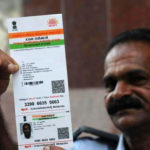With time, college education is becoming expensive and unaffordable for common people. To combat, education loan is provided to students.
Objective of education loan:
To provide the much needed financial support to deserving students for pursuing higher professional or technical education in India and abroad. The education loan would be provided to those students who have obtained admission to career-oriented courses e.g. medicine, engineering, management etc., either at the graduate or post-graduate level.
Right support at right time ensures success for students. No deserving students should be stopped to pursue their dreams due to lack of money.
Eligibility:
- Indian nationals of age between 16 to 35 years, pursuing graduate/postgraduate degree and PG diplomas
- Confirmed admission in a college/universities recognized by UGC/Govt./AICTE etc., such as Management, Engineering, Medicine, Computer science, Architecture, Hotels and hospitality, Agriculture, Fine arts and design, Pure science/BA/MA/B.Com/ M.Com, Some vocational training and technical training courses such as aviation and air-hostess training are sometimes included too.
- If you are taking a loan of more than Rs. 7.5 Lakh, a collateral security will be required.
- Co-applicant: A co-applicant is mandatory for all full time programs. Co-applicant could be Parent/ Guardian or Spouse (if married) / Parent-in-law (if married).
Education loan covers:
- 100% College Tuition Fees payable
- Accommodation charges
- Exam and library fees
- Books and equipments including computer
- Travelling expenses abroad
- Other reasonable expenses required to complete course
Timeline for application approval:
Bank will convey its decision within 15 working days from the date of receipt of the application provided the application is complete in all respects.
Disbursement:
The student loan will be disbursed in full or in suitable installments taking into account the requirement of funds and/or fee schedule as assessed by the Bank directly to the educational institution or vendor of books or equipment or instruments.
Quantum of finance:
- Rs. 10 lakh for study in India
- Rs. 20 lakh for study abroad.
Banks may consider lending higher amount in special cases at their discretion.
Security :
- Upto Rs. 4 lakh – No security, but in this case parents needs to be a joint borrower
- Between 4-7.5 lakhs- along with parents collateral security in form of third party guarantee
- Above 7.5 lakhs- Parents to be joint borrowers + tangible collateral security of suitable value required.
Security for the Loan is determined by the quantum of amount required and the credit worthiness of the principal borrower. Following types of Collateral are accepted:
- Residential property ( house/flat/apartment)
- Fixed Deposit
- Life insurance (sum assured being at least 100% of the education loan amount)
- Non agricultural land
Moratorium period for repayment:
Course period + 1 year or 6 months after getting job, whichever is earlier
Margin money:
- Nil for loan up to Rs. 4 lakh
- 5 percent for study in India on loan above Rs. 4 lakhs.
- 15 percent for study in abroad on loan above Rs. 4 lakhs.
Tenure of loan:
upto 15 years for loan up to Rs 7.5 lakhs and above respectively.
Tax rebate:
Under section 80(e) of the Indian income tax act, a person can exempt the amount paid against the interest of the education loan – either for self or for his/her spouse or children – for eight years from the year(s) he starts to repay the loan or for the duration the loan is in effect, whichever is more.
Documents Required education loan India
- Letter of admission
- Detailed break-up of the costs of the course
- Completed loan application form and photographs
- KYC (Know Your Customer)document
- Academic: Mark sheets / pass certificates of S.S.C, H.S.C, Degree courses
- PAN Card of the student and Parent/ Guardian
- AADHAR Card of the student and Parent/ Guardian
- Proof of identity (Driving Licence/Passport/Aadhar/ any photo identity)
- Proof of residence (Driving Licence/Passport/Electricity bill/Telephone bill)
- Student/Co-borrower/ guarantor’s bank account statement for last 6 months
- IT return/ IT assessment order, of previous 2 years of Parent/ Guardian/ other co-borrower (if IT Payee)
- Brief statement of assets & liabilities of Parent/ Guardian/ other co-borrower
- Proof of income (i.e. salary slips/ Form 16) Parent/ Guardian/ other co-borrower
Interest Rates:
- Different banks have different interest rates on your study loan.
- Interest Rate = Base rate + Mark Up
- Base rate: 9.5 to 10%
- Total interest rate comes between 11.75 per cent and 14.75 per cent, depending on the bank, loan amount and the college concerned.
- Girl students may avail of slightly cheaper rates—by up to 0.50%.
Role of the Guardian:
The parent(s) or guardian of the student would be treated as a co-applicant of the student loan. His or her role would be, necessarily, like the primary debtor.
Disbursement:
The student loan will be disbursed in full or in suitable installments taking into account the requirement of funds and/or fee schedule as assessed by the Bank directly to the educational institution or vendor of books or equipment or instruments.
Terms & conditions:
Bank reserves the right to reject any application / renewal without assigning reasons thereof. It shall be the sole right of the Bank to consider the proposal on case to case basis after taking into consideration, the credentials/credit worthiness of each of the customers.
Central Government Interest Subsidy Scheme for Economically Weaker Section for Education Loans:
Government of India, Ministry of HRD vide letter no. F. 11-4/2010 – U.5(i) dated 25thMay 2010 have formulated a scheme to provide full interest subsidy during the period of moratorium i.e. Course Period plus one year or six months after getting job, whichever is earlier.
This scheme is available for loans taken by students belonging to economically weaker sections (EWS) (where annual parental income from all sources is up to & inclusive of `4.5 lakhs) under the Indian Banks’ Association (IBA) approved Model Educational Loan Scheme, for pursuing any of the approved courses of studies in technical and professional streams, from recognized institutions in India. Link
Note:
- There is always a risk the student may not get a job immediately after completing the course. So, parents have to be prepared for such a scenario
- If you are looking for an education loan, keep these tips in mind:
- Ask your chosen educational institution if it has a preferred lender with whom it has negotiated rates or has a pre-approved loan process.
- If you are going abroad, ask the institution if you can get a loan on campus after you register for the course. You might be able to get better interest rates abroad. For instance, the general level of interest rates is lower in the US and UK than in India right now.
- If you or your family are regulars at your local bank branch, you can use this to your advantage. Sometimes your branch manager can help bring better loan terms your way.
Banks website with education loan details:
- HDFC Education Loan: Link
- Axis Education Loan: Link
- SBI Education Loan: Link
- Punjab National Bank Education Loan : Link
- Non Banking Finance Company (NBFC): Avanse
- First Dedicated Education Loan Company: Credila
Education Loan & Banks perspective:
Loans cannot be claimed as a matter of right. A loan is a debt. The borrower is obliged to pay back or repay the lender at a later period. But it is surprising to note that in India, in the light of directed lending, many a loan is looked upon as charity — “a voluntary help to those in need”.
For Indian banks, the outstanding education loans are reported to be around Rs. 50,000 crore. Education loans are classified as priority sector and are to be encouraged. These loans are to be treated as investment for future economic development and prosperity. Most of the developed and developing countries have student loan schemes.
FROM AID TO RIGHT
In India, the education loan scheme was originally started to help meritorious students pursue higher education in technical and professional courses. However, over the years, rules and regulations got diluted and any student who got admission in a course became eligible for a loan, irrespective of the marks or the process employed in admission.
Education loans started to be viewed increasingly as a financial assistance, not to be repaid. Though such loans are a boon for the poor meritorious students.
The existing loan schemes of the banks in India are generally on liberal terms. Loans up to Rs. 10 lakh can be given for studies in India and up to Rs. 20 lakh for studies abroad. Loans up to Rs. 4 lakh are given without any guarantor or collateral.
However, the defaults in education loans are increasing. Large numbers of student borrowers are not able to get jobs within one year. In many cases, salaries are not sufficient to ensure repayments.
The high incidence of failure in examinations, such as that in engineering courses, also creates a large number of overdue loans. But there are borrowers who simply do not pay, in spite of getting lucrative jobs. The percentage of default is found to be higher in loans without security and guarantor. Banks often face problems in tracking the beneficiaries after the course.
Indian Banks’ Association (IBA) Guidelines:
- Considering the potential damage that NPAs in education loans can cause to the economy, the Indian Banks Association has come out with fresh guidelines on granting of education loans. The guidelines underline the basic banking principle that loans, including educational loans, cannot be claimed as a matter of right. It is to be left to the discretion of bankers to decide whom to lend to and how much to lend, of course based on transparent rules.
- The IBA has urged banks to put in place an effective appraisal system based on sound commercial logic, while serving a noble social cause.
- Only students admitted to recognized institutes by a merit-based selection process will be eligible for loans.
- This will eliminate a large number of students selected in management seats paying capitation fees and donations. Banks must introduce a system to assess the employability of the student after the course.
- Banks may use rating of education institutes and the individual student as a tool for improving the asset quality.
- Highly rated students in highly rated institutions may be granted loans at lower rates.
- Only students admitted to recognized institutes by a merit-based selection process will be eligible for loans.
Source: buddy4study










